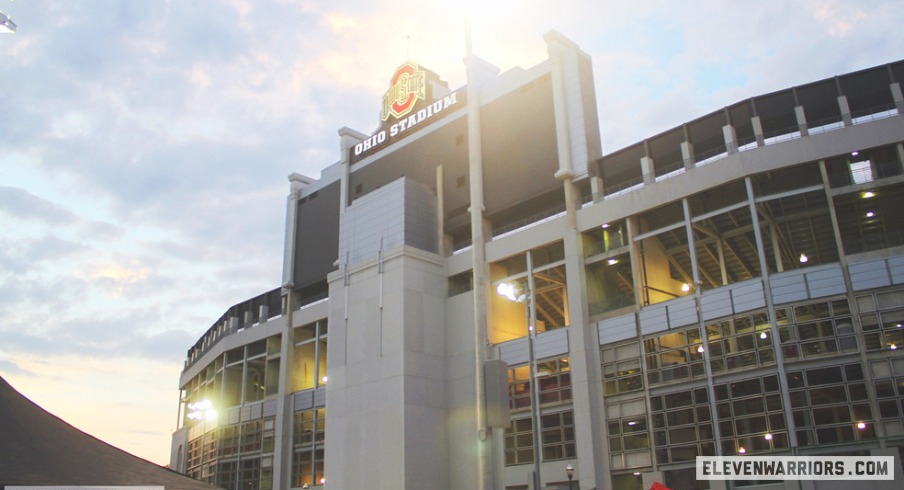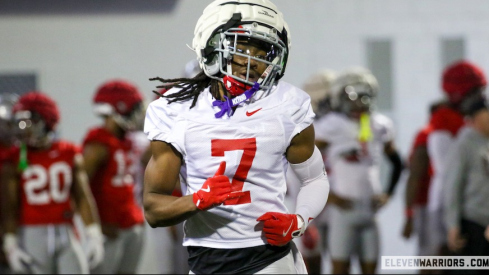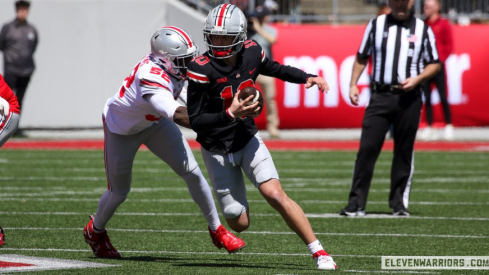The Horseshoe could be brought to you by a corporate sponsor in the future.
In a recent interview with On3, Ohio State athletic director Ross Bjork said the Buckeyes have to keep all options open in terms of naming rights for corporate sponsors, including the possibility of renaming Ohio Stadium.
While Ohio Stadium already has a sponsored field, Safelite Field, Bjorks is also leaving the door open to add a sponsor name to the stadium.
"So Safelite is exclusive for the field naming, so it’s the field name," Bjork told On3’s Pete Nakos. "But in and around the perimeter of the stadium, adjacencies to the field, things like that. I’ve been saying, ‘Look, we have to put everything on the table.’ Naming rights of the stadium. The jersey patch is a conversation. We have to work with our partner, Nike, in that conversation.
“If we’re breaking glass right now and we’re going to put the window back, let’s get it all on the table so we can put the window back in the right position. Everything has to be on the table right now to analyze. That doesn’t mean we’re going to do it. It just means let’s at least answer the question. Here’s the value. Is this the right thing to do? Yes or No. If it’s not, OK, fine. If it is, how do we pursue it? Or how does it fit in?”
Earlier this season, the NCAA approved a rule change that will allow teams to have on-field sponsor logos for regular season games. Jersey patches are another sponsored item that could be allowed in the near future, which Sportico estimates could provide more than $5 million in revenue for a premier program.
All this comes in the wake of the NCAA's $2.78 billion antitrust settlement in May, which established the beginning of a revenue-sharing model in college sports. With athletic departments now able to share up to 22% of the national Power Conference average revenue with athletes – and Ohio State plans to pay its players whatever the full amount is – programs have been looking for ways to increase the money they bring in.
Ohio State has repeatedly stated a commitment to keep all 36 varsity sports it offers intact, starting at the top with president Ted Carter.
“We made one big, bold statement, and that is we're going to maintain 36 Division I sports,” Carter told Eleven Warriors in July. “I watched during COVID-19 what schools like William & Mary and Stanford (which also has 36 sports but opted to cut 11 sports in 2020 before reinstating them in 2021) went through. Even in the state of Nebraska, which happened before I got there, the University of Nebraska at Omaha cut football and wrestling at the Division II level to move into the Summit League. Heavily criticized at the time.
“And as I've watched the college landscape and think about what it means to maintain these sports, it's important once you get them to do everything you can to hold on to them. You don't want to lose that. It's too important to the student-athlete. So we've made a declarative statement that we're going to hold on to that.”
Not all those sports will receive funding at the level they currently do, however, and the Buckeyes are looking for ways to cut costs, especially for sports that aren't generating revenue. All athletes will still have at least one avenue for making money through NIL.
“What sports are in the financial aid category, what sports are in the revenue share category – all sports can be in the NIL category,” Bjork said. “We can try to support them for all sports. And then what you have to do is, depending on how it’s funded in those other categories, you have to determine what are the resources needed to support that sport. If we have sports that become walk-on sports where the athletes are walk-ons, do they need as much infrastructure around them?"
Bjork added that coaching staff reductions and operational changes could be a way to lower costs as well.
"We don’t have full clarity on that piece yet," Bjork said. "That’s part of our analysis. And so when we say shrink, I think the answer is, what do you need to operate that program? And what do you need to operate the program where you don’t impact the student-athlete experience? You still have health and safety. You’re not going backward on that. But the other stuff that we do for our sports, you may have to pull back."
Football will always remain the top revenue driver for Ohio State's athletic department, though. So to help sustain both itself and everything else, Bjork is keeping all his options available.


